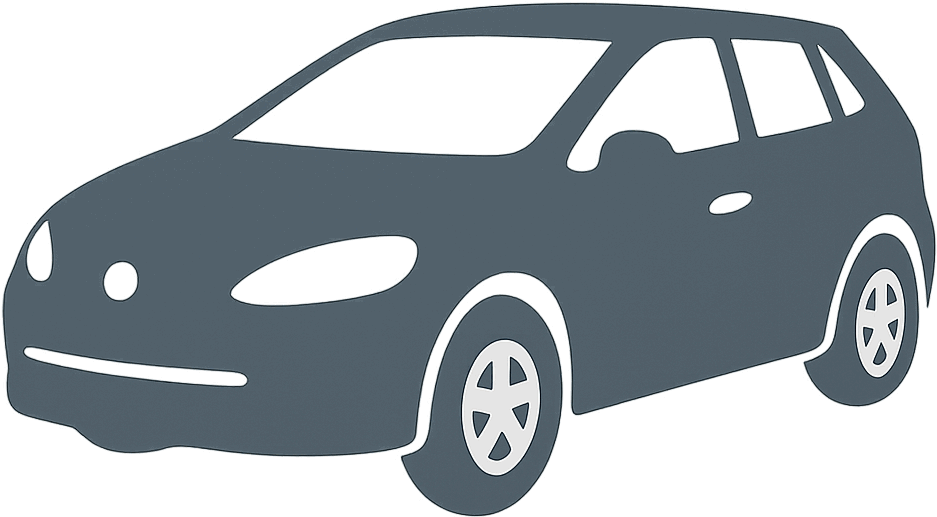 1981 Renault 11 (B/C37) Dimensions, Size & Specs
1981 Renault 11 (B/C37) Dimensions, Size & Specs
Measurements of the 1981 Renault 11, engineered for optimal performance and comfort
| Weight Specifications | |
|---|---|
| Curb Weight: | 840 kg1852 lbs |
| Maximal permitted Weight: | 1350 kg2976 lbs |
| Tire Specifications | |
| Rims Size: |
|
| Tire Size: |
|
The Renault 11 (B/C37) represents a compact hatchback model produced between 1981 and 1988, embodying the French automaker's approach to practical urban mobility during the 1980s. This generation of the Renault 11 features a curb weight of 840 kilograms (approximately 1,854 pounds), making it a lightweight and nimble option within its segment. The maximum permissible weight is listed at 1,350 kilograms (2,976 pounds), combining the vehicle's own mass with the recommended load capacity for occupants and cargo.
Dimensionally, the Renault 11 is equipped with 13-inch rims paired with 165/60 R13 tires, highlighting a tire setup optimized for balance between handling and comfort. While explicit external dimensions such as length, width, and height are not provided here, the size conventionally fits well within the compact hatchback category, which typically offers easy maneuverability and efficient use of interior space.
The hatchback design of the Renault 11 allows for versatile cargo and passenger configurations, appealing to drivers seeking a practical yet stylish small car. Its production period, spanning most of the 1980s, illustrates its relevance and popularity during a time of growing demand for smaller, fuel-efficient vehicles in Europe. Overall, the Renault 11 (1981-1988) stands as a notable representative of compact hatchbacks, balancing lightweight construction, manageable tire specifications, and adaptability for daily driving needs.
Discover the standout features that make the 1981 Renault 11 a leader in its class
Have a question? Please check our knowledgebase first.
The Renault 11 (B/C37), produced between 1981 and 1988, was designed as a compact hatchback meant for urban and suburban use. While specific factory dimensions for length, width, and height vary slightly depending on the market and trim, general figures for this generation are approximately 4,130 mm (162.6 inches) in length, 1,645 mm (64.8 inches) in width, and 1,395 mm (54.9 inches) in height. These dimensions align with its classification as a compact hatchback, ensuring a balance between interior space and maneuverability. The relatively modest width contributes to ease of driving and parking in tighter city environments, while the height supports reasonable headroom and comfort inside the cabin.
The Renault 11 (B/C37) has a curb weight of approximately 840 kilograms (1,853 pounds) and a maximum allowable weight of around 1,350 kilograms (2,976 pounds). This lightweight design contributes positively to the car's fuel efficiency, as lighter vehicles generally consume less fuel due to lower inertia and less load on the engine. Handling benefits as well; the relatively low weight allows for responsive steering and braking. Additionally, the maximum weight specifies the fully loaded condition including passengers, cargo, and fuel, emphasizing that the car maintains good stability and performance when properly loaded. Overall, this balance lends the Renault 11 an agile yet economical driving character typical of early-1980s small hatchbacks.
Yes, the Renault 11 fits comfortably within a standard residential garage. With its approximate length around 4,130 mm (162.6 inches), width about 1,645 mm (64.8 inches), and height near 1,395 mm (54.9 inches), the vehicle is compact enough to be accommodated in typical single-car garages commonly found in homes, which generally start at around 2,400 mm (94.5 inches) wide and 4,800 mm (189 inches) deep. The Renault 11’s smaller footprint and height also facilitate easy entry and exit without concerns about tight clearances. This makes it convenient for urban residents with standard garage spaces looking for a practical hatchback.
The Renault 11 (introduced in 1981) succeeded the Renault 9 series, sharing many mechanical components but offering a hatchback body style compared to the Renault 9's more traditional sedan layout. While both models have similar footprints, the Renault 11 typically measures slightly shorter and more compact due to its hatchback design. This resulted in improved versatility and cargo access, catering to different customer needs. Dimensionally, the Renault 11's length hovered around 4,130 mm (162.6 inches), which is comparable but marginally shorter than the sedan predecessor. The hatchback layout allowed for better rear space utilization despite similar width and height. The changes improved practicality without sacrificing the established driving dynamics familiar to Renault enthusiasts.
The Renault 11 comes equipped standard with 13-inch rims fitted with tires sized 165/60 R13. The 13-inch rim size aligns with the vehicle's compact and lightweight nature, which helps to keep unsprung weight low, translating into better ride comfort and handling responsiveness. The tire width of 165 mm combined with a 60% aspect ratio provides a balanced profile that ensures good road grip while maintaining ride softness on uneven surfaces. The relatively small wheel size improves maneuverability and steering feedback, essential for urban driving and parking. Overall, this combination was typical for cars of the early 1980s, balancing performance, comfort, and cost.
The Renault 11 (B/C37) hatchback is designed to comfortably seat four to five passengers, depending on configuration. Its compact hatchback layout offers practical interior space with adequate headroom and legroom for front and rear occupants, optimized through efficient packaging. While exact interior volume figures vary, the hatchback design enhances cargo flexibility by allowing rear seats to fold down, thereby increasing cargo capacity significantly over a sedan variant. This versatility was a key selling point in the early 1980s, catering to customers who desired a compact car with more adaptable storage solutions for everyday needs and occasional transport of larger items.
The Renault 11 has an approximate width of 1,645 mm (64.8 inches), placing it within the typical range for compact hatchbacks produced during the early 1980s. Competitors such as the Volkswagen Golf Mk1 and Ford Escort Mk3 also hovered around widths of 1,600 to 1,700 mm (63 to 67 inches). This width allowed for reasonable interior space while keeping the vehicle narrow enough for urban environments with tight streets and limited parking. The Renault 11’s width achieves a practical compromise by offering sufficient cabin comfort yet maintaining a manageable external footprint, keeping it competitive in its class.
The Renault 11 hatchback's height is approximately 1,395 mm (54.9 inches), which is typical for small family cars of its era. This height strikes a balance between providing adequate headroom for passengers inside and maintaining a relatively low aerodynamic profile to improve fuel efficiency and reduce wind noise. Though compact, the design offers a comfortable interior space with decent vertical clearance for occupants. Aerodynamically, a lower height helps reduce drag, which was a growing consideration in the 1980s as manufacturers sought to optimize fuel economy amid rising fuel costs.
When compared to similar hatchbacks from the early to mid-1980s, such as the Volkswagen Golf Mk1 and Peugeot 205, the Renault 11 fits well within the expected range. It is similar in length to the Golf Mk1, which measures about 3,970 mm (156 inches), making the Renault 11 a slightly longer and roomier option. In terms of weight, the Renault 11’s curb weight of 840 kg (1,853 lbs) is competitive, often lighter than some competitors which could exceed 900 kg (1,984 lbs). This weight advantage contributes to better fuel economy and agility. Overall, the Renault 11 represents a balanced offering with adequate size and weight characteristics suitable for urban and suburban driving needs.
The Renault 11 was factory-equipped with 13-inch rims fitted with tires sized 165/60 R13. This combination was selected to harmonize ride comfort, handling, and cost efficiency. For owners interested in improving handling or aesthetics, upgrading to wider tires or larger rims can be considered, though it's important to maintain appropriate overall diameter to avoid speedometer inaccuracies and suspension issues. For instance, moving to 14-inch rims with a compatible lower profile tire could improve cornering grip but may slightly affect ride softness. Always ensure that any upgrades conform to the vehicle’s load rating and suspension design.
